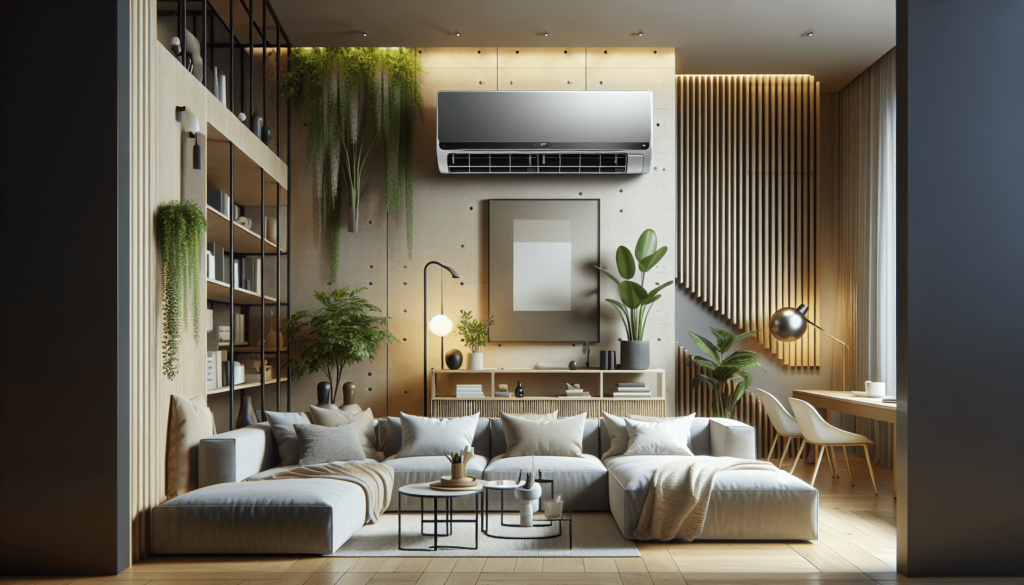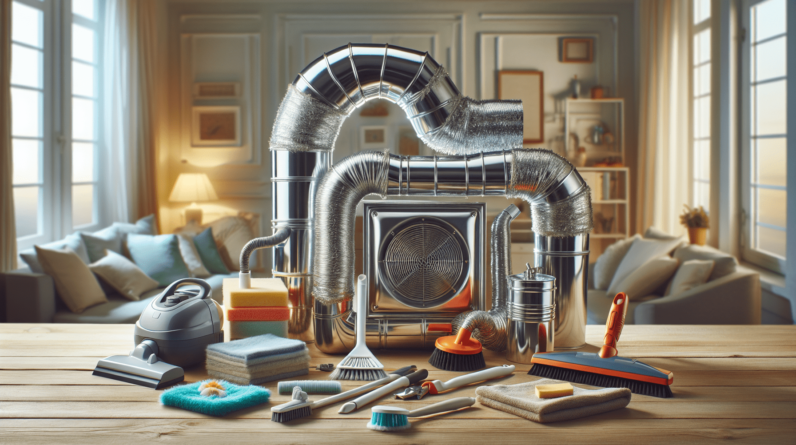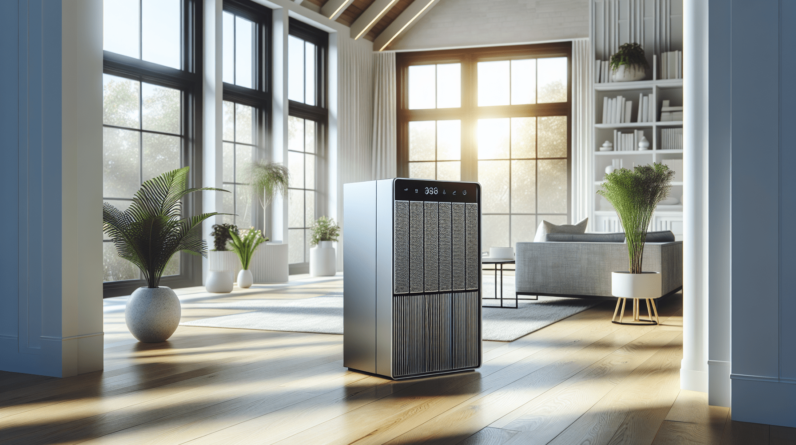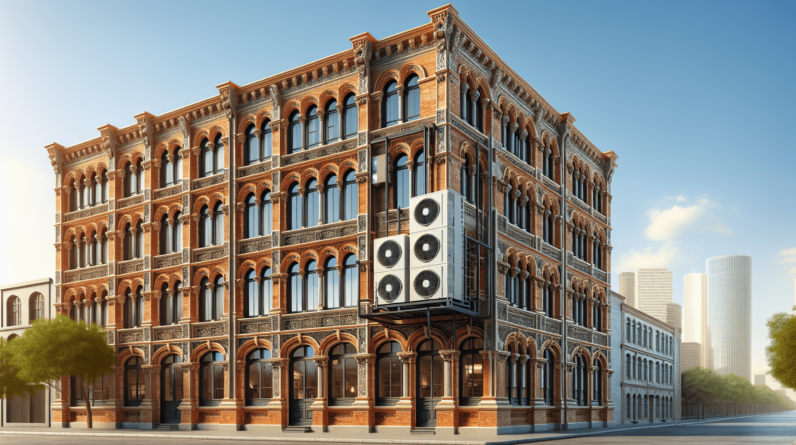

Have you ever wondered how you can keep your space cool during those sweltering summer months? A wall unit air conditioner might just be the answer you’re looking for! These units are both effective and convenient, making them ideal for many homeowners and renters alike. Let’s look deeper into the ins and outs of wall unit air conditioners.

What is a Wall Unit Air Conditioner?
A wall unit air conditioner, often referred to simply as a “wall AC,” is a type of air conditioning system that is built into a wall. These units are designed for individual rooms rather than entire homes, making them perfect for apartments, studios, or any space where central air conditioning isn’t an option.
Wall units are versatile and come in various sizes, typically providing cooling and heating capabilities. They are an excellent choice for those who want economical temperature control without the expense of a central air system.
How Do Wall Unit Air Conditioners Work?
Understanding how a wall unit air conditioner works can help you appreciate its functionality. Here’s a simplified breakdown of the process:
The Cooling Cycle
-
Evaporation: The refrigerant inside the unit absorbs heat from the air within the room, causing it to evaporate. This process cools the air before it circulates back into your living space.
-
Compression: The refrigerant, now in gas form, is compressed by the compressor located in the outdoor portion of your wall unit, increasing its temperature and pressure.
-
Condensation: The hot refrigerant gas is then released through coils on the exterior of the unit, where it releases heat to the outside environment and condenses back into a liquid state.
-
Expansion: The refrigerant then goes through an expansion valve, which reduces its pressure and temperature. Afterward, it enters the indoor coils to begin the process anew.
By repeating these steps, the wall unit maintains a comfortable temperature in your room.
Advantages of Wall Unit Air Conditioners
You might be curious about what makes wall units a popular choice among many. Here are some compelling benefits:
Energy Efficiency
One of the standout features of wall unit air conditioners is their energy-efficient operation. Many models come with energy-saving modes and timers. As a result, you can cool your space without incurring exorbitant electricity bills.
Easy Installation
Installing a wall unit air conditioner is generally easier compared to central air systems. Most units come with an installation kit, and you can typically complete the process in a few hours. If you’re a DIY enthusiast, you might find it particularly rewarding.
Space Saving
Since these units are mounted on the wall, they save valuable floor space. This can be especially beneficial in smaller rooms or apartments, allowing you to maximize your living area while keeping it cool and comfortable.
Customizable Cooling
Wall units allow you to cool specific rooms as needed, giving you flexibility and control over your indoor climate. This is particularly ideal for homes with inconsistent cooling needs among different rooms.
Disadvantages of Wall Unit Air Conditioners
While wall mounted air conditioners have many advantages, they also come with a few downsides. Here’s what you should keep in mind:
Initial Cost
The upfront cost of purchasing and installing a wall unit can be higher than that of window units. However, over time, the energy savings may offset this initial investment.
Maintenance
Like any air conditioning system, wall units require regular maintenance to keep them running efficiently. You will need to clean or replace filters regularly, check the refrigerant levels, and ensure the unit is free from dust and debris.
Noise Levels
Depending on the model, wall unit air conditioners can be noisier than other cooling solutions. The compressor and fans generate sound that may disturb the serenity of your space, especially during quiet times.

Choosing the Right Wall Unit Air Conditioner
With so many options available, selecting the right wall unit can seem overwhelming. There are several factors to consider to ensure you pick the best model for your needs.
Room Size
The first practical step is to measure the size of the room you wish to cool. The cooling capacity of wall units is measured in BTUs (British Thermal Units). The greater the BTU rating, the larger the space it can effectively cool. Below is a helpful guide:
| Room Size (sq. ft.) | BTU Rating |
|---|---|
| 100 – 150 | 5,000 |
| 150 – 250 | 6,000 |
| 250 – 300 | 7,000 |
| 300 – 400 | 8,000 |
| 400 – 450 | 9,000 |
| 450 – 500 | 10,000 |
Energy Efficiency Rating (EER)
When shopping for a wall unit air conditioner, pay close attention to its Energy Efficiency Rating (EER). A higher EER indicates better energy efficiency, which translates into long-term savings on your energy bills.

Features
Different models come with a variety of features. Consider what’s most important to you, whether it’s advanced cooling modes, programmable timers, remote controls, or smart home compatibility. Prioritize features that align with your lifestyle and preferences.
Brand Reliability
Research reputable brands known for producing high-quality wall air conditioners. Reading customer reviews and feedback can help you gauge the reliability and durability of specific models.
Installation of Wall Unit Air Conditioners
If you’re considering a wall unit air conditioner, one of the significant steps is the installation process. It’s crucial to ensure proper installation for optimal performance.
Tools Required
Before you start, gather the following tools:
- Drill
- Screwdriver
- Level
- Tape Measure
- Safety Glasses
Step-by-Step Installation Guide
-
Measure the Wall: Position the unit at an appropriate height, ideally around 4 to 5 feet from the floor. Ensure it’s away from direct sunlight and any obstructions.
-
Cut the Hole: Use a level and tape measure to outline where you’ll cut into the wall. Make sure it adheres to the dimensions provided by the unit’s installation manual.
-
Install the Mounting Bracket: Secure the mounting bracket according to the manufacturer’s instructions, ensuring it’s level and firmly affixed to the wall.
-
Insert the Unit: Carefully slide the wall unit into the opening, ensuring it sits on the bracket. Once in position, use screws to secure the unit to the bracket.
-
Seal the Opening: Fill any gaps around the unit with foam insulation or caulk to protect against air leaks.
-
Connect the Power: Follow the manufacturer guidelines to connect the power, ensuring all electrical connections are safe.
-
Test the Unit: Finally, turn on the unit to confirm it’s functioning properly. Check for any unusual noises and ensure it cools effectively.
Maintenance Tips for Wall Unit Air Conditioners
To keep your wall unit running smoothly and efficiently, regular maintenance is essential. Here are some practical tips you can follow:
Clean or Replace Filters
Dirty filters can hinder airflow and reduce cooling efficiency. Aim to clean the filters every month during peak usage, and replace them every three to six months, depending on the manufacturer’s recommendation.
Inspect the Coils
Both the evaporator and condenser coils should be checked for dust and debris. Gently clean the coils with a soft brush or vacuum attachment to prevent buildup that can cause overheating.
Check the Drainage
Ensure that the drainage channel is clear to avoid water pooling inside the unit. If you notice leaks, your unit may require further inspection.
Schedule Professional Servicing
Consider scheduling professional servicing at least once a year. A technician can thoroughly inspect your unit, check refrigerant levels, and perform essential maintenance tasks that may not be within your comfort zone.
Wall Unit Air Conditioners vs. Other Types of AC Systems
You may be wondering how wall units stack up against other air conditioning options. Here’s a brief comparison:
Wall Units vs. Window Units
Installation: Window units are easier and quicker to install. However, wall units offer permanent installations that don’t require removal for the off-season.
Efficiency: Wall units often have a higher capacity and efficiency, making them suitable for larger spaces compared to window models.
Aesthetic Appeal: Wall units are less intrusive and can be more aesthetically pleasing than window units, which can block views.
Wall Units vs. Central Air Conditioning
Cost: Installing central air conditioning is generally more expensive, both in terms of initial investment and ongoing energy costs.
Coverage: Central air provides uniform cooling throughout the home, while wall units are more suited for individual rooms.
Installation Complexity: Central air requires ductwork installation, while wall units require just a small cut into the wall.
Conclusion
Choosing and maintaining a wall unit air conditioner can be a smart investment for your comfort, especially during those hot months. By understanding its operation, advantages, and essential tips for care, you can enjoy the benefits of a cool, comfortable space, allowing you to focus on what matters most. Whether you’re considering a small addition to your apartment or looking for greater control in your larger home, these units provide an energy-efficient solution to keep you cool.
Remember, whether you’re planning an installation or need maintenance tips, understanding your options will lead to better decisions. So, when those temperatures rise, you’ll be all set with your wall unit air conditioner!






